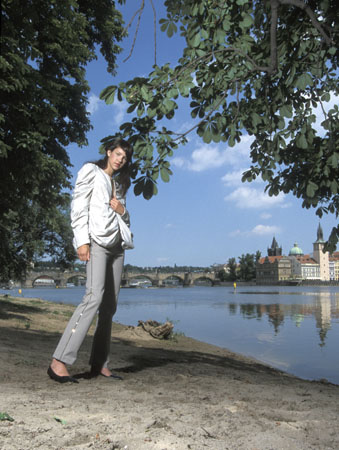 Wide-angle lenses, particularly those of focal length 17 - 35mm, are useful when portraying people in the context of their environment. The camera must be close to the subject to give a worthwhile reproduction ratio, and perspective is consequently accentuated. Under these circumstances, perhaps less than a metre from the subject, care must be taken to ensure that facial features do not become grotesque. Depth relationships of different planes in a scene are clearly shown, and relationships between objects appear to change. Also, vertical lines converge if the camera is moved away from the horizontal. What is acceptable is largely a matter of taste.
Wide-angle lenses, particularly those of focal length 17 - 35mm, are useful when portraying people in the context of their environment. The camera must be close to the subject to give a worthwhile reproduction ratio, and perspective is consequently accentuated. Under these circumstances, perhaps less than a metre from the subject, care must be taken to ensure that facial features do not become grotesque. Depth relationships of different planes in a scene are clearly shown, and relationships between objects appear to change. Also, vertical lines converge if the camera is moved away from the horizontal. What is acceptable is largely a matter of taste.
The broad field of view of a wide-angle lens reveals great swathes of the surroundings, so depth of field, composition and exposure must be carefully considered. When using a 17mm lens focused at one metre and set to an aperture of f/16, depth of field extends from about 50cms to infinity. Background detail is rendered sharp and must be interesting and appropriate if it is to provide context. Off-centre subject placement leaves lots of empty space, so a small or distant secondary subject may be needed to restore visual balance.
Determining exposure for a wide field of view, where contrast may be extreme, is not completely straightforward. A person's face or body may occupy only a small part of an image. Contrast between the subject and other parts of the image, such as the sky or a dark recess, may well exceed the latitude of a film or sensor. If so, it must be reduced - perhaps by re-framing, diffusing the light or using fill. Centre-weighted measurements are obviously a poor compromise where the subject is off-centre. Averaged or multi-segment measurements combined with some fill may prove adequate. Alternatively, take spot measurements from key areas of highlight and shadow, use fill and do some bracketing.